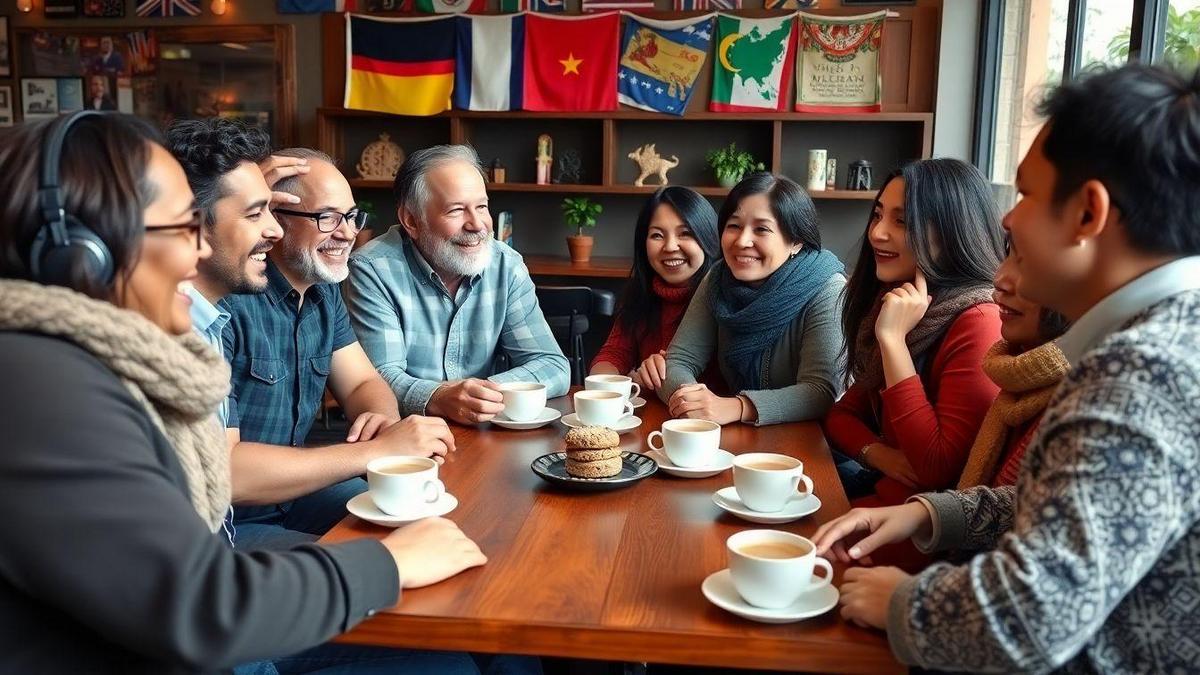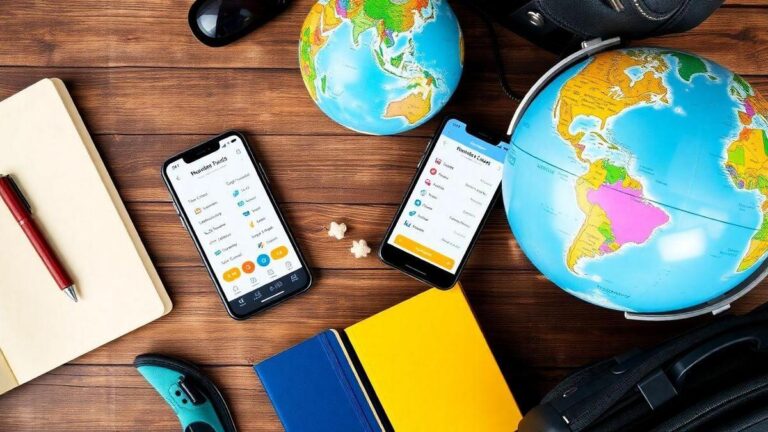Tips for building meaningful relationships through language barriers
Tips for building meaningful relationships through language barriers can truly open up new worlds for you. Communication is more than just words; it’s a dance of understanding, empathy, and connection. In this article, you’ll discover how language barriers can affect your relationships and learn some fun and practical tips to overcome them. You’ll see how active listening, nonverbal cues, and embracing cultural differences can enhance your conversations. Get ready to explore ways to create deeper bonds and celebrate the beauty of shared experiences!
Key Points to Remember
- Use simple words and clear speech.
- Listen with patience and show you care.
- Ask questions to keep the conversation going.
- Use gestures or drawings if needed.
- Find common interests to connect better.
Understanding Language Barriers in Communication
The Impact of Language Barriers on Relationships
Language barriers can be tough cookies to crack! When you and someone else don’t speak the same language, it can lead to misunderstandings and frustrations. Imagine trying to share a funny story or express your feelings, but words just won’t come out right. It can feel like you’re speaking two different languages, even if you’re both trying your best.
These barriers can create a gap in relationships, making you feel isolated or misunderstood. You might miss out on building connections that could be meaningful. But don’t let that stop you! Recognizing these challenges is the first step towards overcoming them.
Tips for Overcoming Language Barriers
Here are some handy tips to help you bridge the gap and build connections:
- Learn Basic Phrases: Picking up a few key phrases in another language can go a long way. Simple greetings or thank you can show that you care.
- Use Visuals: Pictures, gestures, and body language can help convey your message. Sometimes a smile or a thumbs-up speaks louder than words!
- Be Patient: Communication takes time. Give yourself and the other person a chance to express thoughts without rushing.
- Ask Questions: If you don’t understand something, it’s okay to ask for clarification. It shows you’re interested and want to connect.
- Utilize Technology: There are great translation apps that can help you communicate better. Use them to your advantage!
Building Empathy in Conversation
Empathy is the glue that holds conversations together. Here’s how you can build it:
- Listen Actively: Pay attention to what the other person is saying. Sometimes, just listening can make a world of difference.
- Share Stories: Personal stories can create bonds. When you share your experiences, it can help the other person relate to you.
- Be Open-Minded: Everyone has a different background. Embrace those differences and be curious about them.
- Practice Kindness: A little kindness goes a long way. A warm smile or a friendly tone can make someone feel at ease.
| Tips for Building Meaningful Relationships Through Language Barriers |
|---|
| Learn Basic Phrases |
| Use Visuals |
| Be Patient |
| Ask Questions |
| Utilize Technology |
| Listen Actively |
| Share Stories |
| Be Open-Minded |
| Practice Kindness |
Effective Listening and Nonverbal Communication
The Role of Active Listening in Meaningful Relationships
Active listening is more than just hearing words; it’s about truly understanding what someone is saying. When you practice active listening, you show that you care about the other person’s thoughts and feelings. It builds trust and helps create deeper connections.
Imagine you’re chatting with a friend who is sharing something important. Instead of thinking about what you will say next, focus on their words. Nod your head, maintain eye contact, and ask questions. This shows that you are engaged and interested.
Research shows that people feel more valued when they are listened to actively. So, when you listen with intention, you’re not just hearing their words; you’re also making them feel heard and appreciated.
Using Nonverbal Cues to Enhance Understanding
Nonverbal communication is a powerful tool. It includes body language, facial expressions, and gestures. These cues can often say more than words themselves. For instance, a warm smile can make someone feel welcomed, while crossed arms might signal defensiveness.
When you pay attention to these nonverbal signals, you can better understand the emotions behind the words. This helps you respond in a way that resonates with the other person.
Here’s a quick table to illustrate some common nonverbal cues and their meanings:
| Nonverbal Cue | Meaning |
|---|---|
| Eye contact | Engagement and interest |
| Smiling | Warmth and friendliness |
| Crossed arms | Defensiveness or discomfort |
| Nodding | Agreement and understanding |
| Leaning in | Interest and attentiveness |
Strategies for Effective Nonverbal Communication
To improve your nonverbal communication skills, consider these strategies:
- Be Aware: Pay attention to your own body language. Make sure it matches your words.
- Mirror: Subtly mimic the other person’s gestures. This can create a sense of connection.
- Use Space Wisely: Respect personal space, but don’t be afraid to lean in a bit to show interest.
- Facial Expressions: Use them to express empathy and understanding. A simple smile can go a long way.
When you combine active listening with effective nonverbal communication, you create a powerful bond that can help you overcome language barriers.
Cultural Understanding and Shared Experiences
How Cultural Differences Affect Communication
Cultural differences can be like a double-edged sword. On one hand, they can lead to misunderstandings. On the other, they can open doors to new friendships and shared experiences. When you communicate with someone from a different culture, you might notice differences in body language, tone, or even the way people express emotions.
For example, in some cultures, maintaining eye contact shows confidence, while in others, it may be seen as disrespectful. These little things can make conversations tricky. But don’t worry! Understanding these differences can help you connect better with others.
Tips for Building Meaningful Relationships through Cultural Exchange
Building relationships across cultures can be exciting! Here are some tips to help you connect with others:
- Listen Actively: Pay attention to what others are saying. It shows you care.
- Ask Questions: If you’re unsure about something, just ask! Most people appreciate your interest.
- Share Your Culture: Talk about your traditions and experiences. It can spark great conversations.
- Be Open-Minded: Embrace differences and be willing to learn. You might discover something amazing.
- Use Simple Language: If there’s a language barrier, keep your words simple. It helps everyone understand better.
Learning from Shared Experiences Across Cultures
Shared experiences can bridge gaps between cultures. Think about a time you traveled or tried a new food. Those moments create memories that connect us. When you share an activity, like cooking a meal together or celebrating a holiday, you build a bond that goes beyond words.
Here’s a quick table to show how shared experiences can enhance your understanding:
| Shared Experience | Cultural Insight |
|---|---|
| Cooking a traditional dish | Learn about family traditions |
| Celebrating a festival | Understand community values |
| Attending a local event | Discover social norms and customs |
These moments are not just fun; they’re opportunities to learn and grow. By engaging in shared experiences, you not only create lasting friendships but also deepen your understanding of the world around you.
Frequently Asked Questions
What are some tips for building meaningful relationships through language barriers?
– Be patient and listen closely. Understanding takes time!
How can I improve my communication when we speak different languages?
– Use simple words and gestures. A smile goes a long way!
Should I learn some basic phrases in their language?
– Yes! Learning greetings or thank you can show you care.
What role does body language play in overcoming language barriers?
– Body language is key! It helps express your feelings without words.
How can I show respect when there is a language barrier?
– Be open and kind. Show that you value their culture and language!

Hey, I’m Paula — traveler, language nerd, and the curious mind behind znewz.com. I’ve always believed that real connections happen through words, gestures, and shared experiences — not algorithms. That’s why I created this blog: to share travel stories from around the world and explore how language helps us connect in ways that AI still can’t. Whether I’m getting lost in a tiny town or striking up a chat in a language I barely know, I’m here to show that sometimes the best moments happen when tech takes a back seat.






